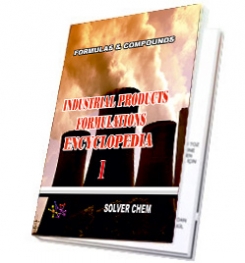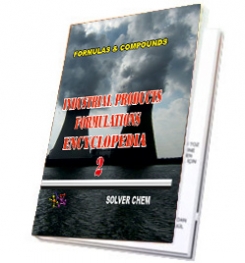Thinner oils are being used these days for three reasons: They save fuel in test engines, the viscosity rules have changed, and manufacturers are recommending thinner grades.
The Sequence VI-B is the test used to evaluate fuel economy for the GF-3 specification. The VI-B test engine is fitted with a roller cam where the old Sequence VI test used a slider cam. The old Sequence VI test responded well to friction modifiers, but the Sequence VI-B responds to thinner oils.
The test oil’s fuel efficiency is compared to the fuel efficiency of a reference oil in the Sequence VI-B test. To pass, the test oil must improve fuel economy one to two percent, depending on viscosity grade. SAE 5W-20 must produce higher relative fuel efficiency than SAE 5W-30.

It is interesting to note that the reference oil is fully PAO synthetic SAE 5W-30. To qualify for the GF-3 Starburst, ordinary mineral oils had to beat the fuel economy of the full synthetic reference oil. (It seems there is more to fuel economy than a magic base oil.)
Another factor in fuel economy is temporary polymer shear. These polymers are additives known as viscosity index improvers (or modifiers). Polymers are plastics dissolved in oil to provide multiviscosity characteristics. Just as some plastics are tougher, more brittle or more heat-resistant than others, different polymers have different characteristics.
Polymers are huge molecules with many branches. As they are heated, they uncoil and spread out. The branches entangle with those of other polymer molecules and trap and control many tiny oil molecules. Therefore, a relatively small amount of polymer can have a huge effect on oil viscosity.
As oil is forced between a bearing and journal, many polymers have a tendency to align with each other, somewhat like nesting spoons. When this happens, viscosity drops. Then when the oil progresses through the bearing, the polymer molecules entangle again and viscosity returns to normal. This phenomenon is referred to as temporary shear.

Because the Sequence VI-B test responds to reductions in viscosity, oil formulators rely on polymer shear to pass the test. A shear stable polymer makes passing the GF-3 fuel economy test much more challenging.
New rules defining the cold-flow requirements of SAE viscosity grades (SAE J300) became effective in June 2001. The auto manufacturers were afraid that modern injection systems might allow the engine to start at temperatures lower than the oil could flow into the oil pump. Consequently, the new rules had a thinning effect on oil.
The auto manufacturers now recommend thinner oils for their vehicles than in the past. Years ago, SAE 10W-40 was the most commonly recommended viscosity grade, later migrating to SAE 10W-30. SAE 5W-30 is most popular now, but Ford and Honda recommend SAE 5W-20. It is likely that more widespread adoption of SAE 5W-20 and other thin oils may occur to help comply with CAFE requirements.
Because of the change in cold-flow requirements and the fuel economy test pushing formulators toward the bottom of the viscosity grade, today’s SAE 10W-30 oils are more like yesterday’s (GF-1 spec) SAE 5W-30 oils. On top of that, there is a trend toward auto manufacturers recommending thinner grades. This seems ridiculous. SUVs and trucks, with their inherently less-efficient four-wheel drive and brick-wall aerodynamics, need powerful, gas-guzzling engines to move their mass around in a hurry. In response, auto manufacturers recommend using thin oils to save fuel.

any engine oil
LUBRICATING OIL
FORMULATIONS
ENCYCLOPEDİA
is enough.
LUBRICATING OIL FORMULATION ENCYCLOPEDIA has many formulations of greases, complex grease, lithium grease production,sodium greases formula, formulation,multigrade engine oils manufacturing process,motor oils making, gear oil production, synthetic engine oils,semi synthetic motor oils,gasoline oils,diesel oils production process,composition of turbine oils,transmission oil manufacturing, production of cycle motor engine, tractor oils,mineral based motor engine production,heat transfer oils, slideway oils formulation, formulations, cutting oils formula,formulas grinding oils,mould oils manufacturing process and etc.
All lubricating oils in the encyclopedia are producible easily.You need no help and no technıcal support. The encyclopedia is enough to produce lubricating oils and engine oils itself.
LUBRICATING OIL
FORMULATIONS
ENCYCLOPEDIA
is written clear and understandable.


HARD BOOK E BOOK
RELATED TAGS: What is engine oils,making synthetic diesel engine oil,semi synthetic engine oil manufacturing process,mineral based engine oil production, heavy duty engine oil formulation,high performance engine oil formula,formulas,properties of motor oils,synthetic motor oil msds, analysis,composition of engine oils,additives of motor oils, mineral engine oil formulation,make semi synthetic diesel engine oil, base oils,synthetic base oils,light neutral oil,heavy neutral oil,performance additives package, properties of diesel engine oil, how to formulate engine oils, types of engine oils, synthetic motor oils,ingredients of engine oils,compounds of engine oils, index of motor oil,characteristic of motor oils,application of motor oils,combination of synthetic engine oils.
SOLVERCHEM PUBLICATIONS

|
|

|
|

|
|
